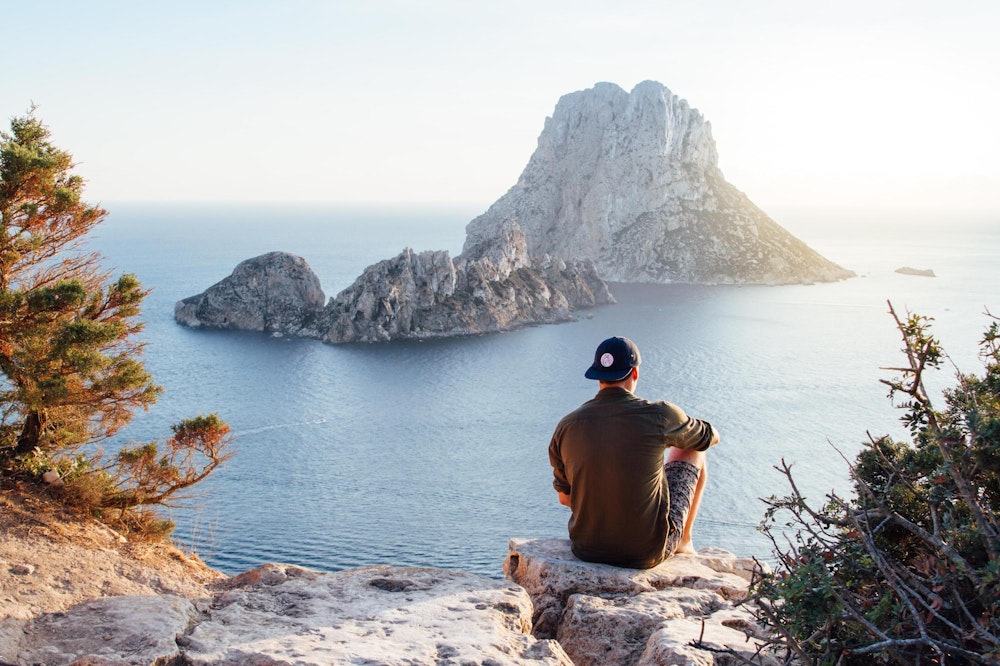How to Immerse Yourself in Local Culture on Your Next Trip
In a recent TripIt survey, travelers ranked cultural experiences as a top priority when booking a trip—second only to cost.
Experiencing local culture on a trip can mean a variety of things, and Americans have their favorites: According to the survey data, more than three-quarters (77%) of respondents prioritize visiting historical monuments or museums when traveling to a new place; 67% said they prioritize shopping at and supporting local businesses; 64% learn about the cultural nuances of their destination in advance; and 39% participate in local customs.
Chances are, these experiences might top your list of must-dos, too. So, how do you take said priorities and fold them into planning an actual trip itinerary? It comes back to intentional travel — that is, traveling with a purpose in mind and making conscious choices at every step of your trip.
Here are eight ways to do just that.

1. Make a point to go slow
You might be familiar with the slow travel movement—the call for travelers to spend more time in fewer places and move more intentionally from place to place, too. The concept rejects the idea of parachuting into major cities on a whirlwind tour; jetting from place to place with barely enough time to get a feel for one before you’re on to the next.
Some countries are making strides to encourage this sort of traveler behavior. In May, French lawmakers signed into law a ban on short-haul flights where train travel is available. The law applies to routes that can be covered by train in less than two-and-a-half hours.
But slow travel is more than choosing trains over planes. It’s about being intentional about how you spend your time in your destinations; how you get around the places you’re visiting (more on this, below); and your impact on the local economy and environment.
Making a conscious effort to take it slow can give you the time to understand how a trip can be mutually beneficial: that is, how a place makes a positive impact on you, but also how you can make a positive impact on a place, too.
2. Walk the city
The French word flânerie—that aspirational act of wandering without aim and observing your surroundings with curiosity—comes to mind. And while aimless strolling might sound like the opposite of intentional travel, it’s not. In fact, walking around a city and taking in the everyday life of locals is a practical way to better understand the place you’re visiting.
Next trip, plan to walk—yes, you can have a destination in mind—and be mindful of the experiences you’re having along the way. You might pass by pocket parks and playgrounds teeming with activity, street vendors and local artists selling their wares, captivating impromptu performances, and much more.
These experiences may be happenstance, but the openness to experiencing them is not.
3. Take public transportation
The yellow trams in Lisbon. The subway in NYC. The high-speed trains in Japan.
Taking public transportation gives you first-hand experience in traversing a destination like a local. Meanwhile, the transit system itself often reveals a lot about the city’s history, geography, economy, and of course, culture.
The New York subway system, for example, was built in the early 1900s to help solidify the city as a world economic power. Since then, it’s had its ups and downs—often mirroring the economic climate—but it’s impossible to imagine the city without it. And the 5.5 million people who now ride it every day would agree.
4. Research local customs ahead of time
According to a recent TripIt survey, 64% of respondents make learning about the cultural nuances of their destination in advance a priority. This can include everything from planning what to pack, what to wear, and how to greet people, to understanding the cultural or religious events taking place during your visit, and much more.
Researching local customs and norms ahead of your trip can help ensure you not only get everything out of your trip that you hoped for, but also that you’re respectful of and knowledgeable about what’s important to the people who live in the place you’re visiting.
5. Dig into the local culinary scene
Have you ever traveled to a destination just to try its traditional dishes? <raises hand.> You probably haven’t forgotten your first bite of that coveted dish, either.
If this doesn’t describe you, but you want it to, here are some ideas:
- Take a walking food tour: You’ll learn about the local cuisine from an expert, enjoy delicious dishes, and discover local eateries you might not have otherwise. Plus, you can map—and come back to—the spots you loved later in your trip.
- Book a cooking class: Get a hands-on experience by taking a cooking class with a local chef or homecook who can teach you how to replicate traditional dishes back home.
- Visit a local farm or farmers market: Go to the source by visiting a local farm, fishery, orchard, or farmers market to learn from the growers and tradespeople who supply the ingredients for local cuisine.
6. Shop local artisans and makers
More than two-thirds of American travelers agree: Shopping at and supporting local businesses is a must when traveling to a new destination.
The best way to do this? On foot. Indeed, research shows you’re more likely to pop into local shops when you’re traversing a new city on foot (read: not whizzing by in a taxi). Plus, doing so is good for the local community; it supports local businesses, while also limiting your impact on the environment.
7. Visit lesser-known museums
So, you’ve taken the above advice about riding the subway or walking the streets of Manhattan—but now what? If you’re like the majority of travelers, you’re headed to a museum. And probably one of the most famous ones, like The Met, MoMa, the Guggenheim, and the Whitney.
Undoubtedly, these titans of art and culture are well worth a visit. But, big name museums might not take a local lens. It’s often smaller museums that are more focused on showcasing local artists, history, and more.
Lesser-known museums worth a visit include the Tenement Museum, the Museum of the City of New York, El Museo del Barrio, and the New York Transit Museum—just to name a few.
Of course, New York is just an example. The advice rings true for any city you visit: Make visiting smaller or more niche museums a priority to get a closer look at the fabric of that place.
8. Mingle with locals
I like this advice from Lauren James, travel and lifestyle blogger at Lauren’s Suitcase: “I like to get somewhere and pretend I live the
re, so I always make a point to get to know the locals, and ask about what they like to do.”
It summarizes the best way to discover the local culture—through experiences with people. Undoubtedly, the people who live in your destination know it best; better than guidebooks or tourist-curated sites. Next trip, make time to get to know the people—and thus, the culture—in real time.


